Wine Spotlight: A South African Symphony – Pinotage Elegance
A South African Symphony – Pinotage Elegance

Appearance:
South African Pinotage graces the glass with a captivating deep ruby red hue, hinting at the rich character within. Its clarity and vibrancy suggest a wine that is both youthful and inviting.
Aroma:
Upon the first swirl, the nose is greeted by a delightful medley of red and dark fruit aromas. Juicy plum and ripe cherry take center stage, accompanied by a subtle hint of raspberry. Layers of spiciness unfold, with a touch of smokiness and a hint of chocolate. The aromatic profile is both inviting and complex, setting the stage for an intriguing tasting experience. (yeast suggestion: RC-212, D254, D80, and BM4X4)
Palate:
The palate echoes the promises made by the aroma, delivering a well-orchestrated performance of fruit and spice. Ripe blackberry and red cherry flavors dance on the taste buds, complemented by a nuanced layer of plum. The wine exhibits a smooth, medium-bodied texture, with soft tannins providing a gentle structure. A touch of oak (French oak, medium toast) adds depth without overshadowing the varietal’s inherent characteristics.
Flavor Profile:
South African Pinotage exemplifies the distinctive qualities of the grape and the terroir of their wine country. The fruit-forward nature is complemented by a subtle earthiness and a trace of cedar. There’s a delightful balance between the vibrant fruit expression and the savory elements, creating a harmonious and thoroughly enjoyable flavor profile.
Pairing Suggestions:
South African Pinotage is a versatile companion at the table. Pair it with grilled lamb chops, mushroom risotto, or even a smoky barbecue for a delightful experience. Its approachable nature makes it equally enjoyable on its own, making it a fantastic choice for casual gatherings or more formal occasions.
Overall:
South African Pinotage is a testament to the grape’s adaptability and the winemaker’s skill. It strikes a perfect balance between fruit-forward exuberance and the complexities that make Pinotage unique. The wine is expressive, inviting, and showcases the essence of South African winemaking.
Interested in making South African Pinotage? Give us a call at 877-812-1137 to speak to a winemaking representative about your order. Cheers!
Pinotage Perfection: Crafting Excellence in South African Vineyards
Nestled in the breathtaking landscapes of South Africa, a grape varietal has captured the hearts of winemakers and connoisseurs alike – Pinotage. Born and bred in the Cape Winelands, Pinotage is a testament to the fusion of tradition, innovation, and the terroir that makes South African winemaking truly exceptional. Join us as we explore why making Pinotage wine in South Africa is a journey into vinous greatness.
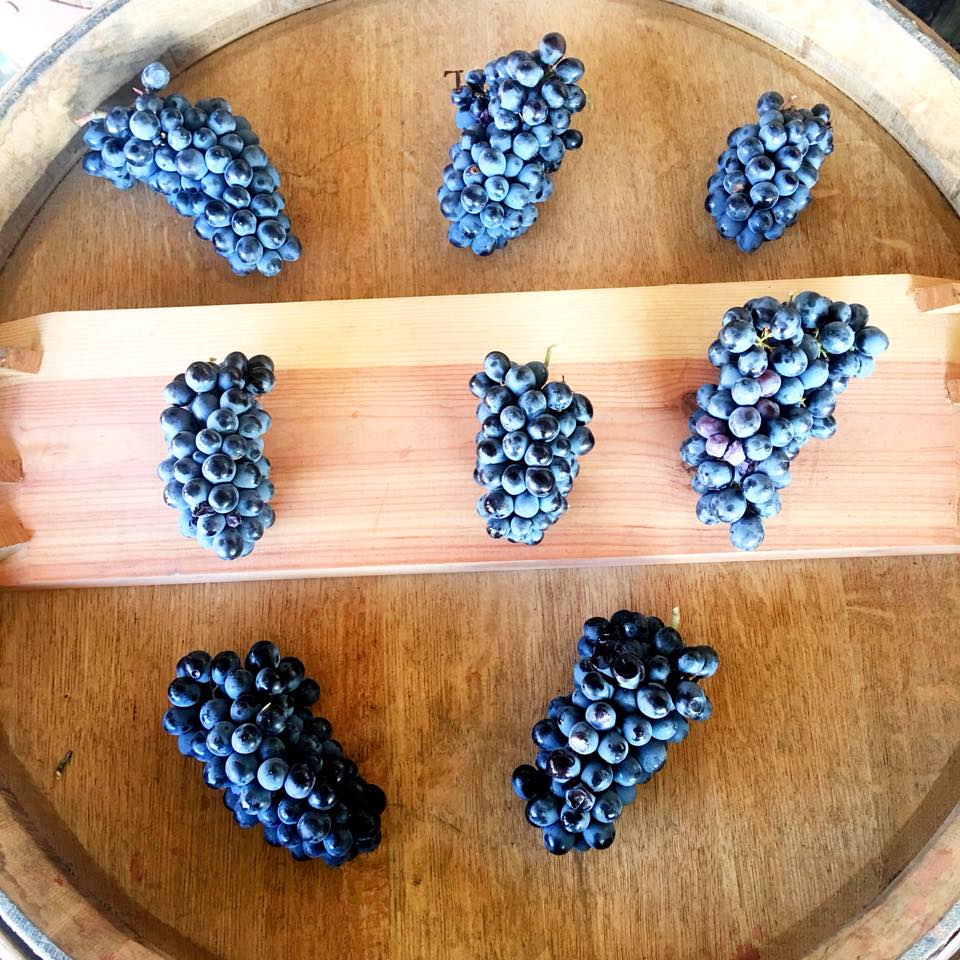
A Unique Grape with a Distinct Identity:
Pinotage, a cross between Pinot Noir and Cinsaut, was created in South Africa in the early 20th century. This grape has since evolved into a distinctive varietal, embodying the spirit of the region. Known for its bold, robust character and complex flavors, Pinotage stands as a symbol of South African winemaking innovation and determination.
Embracing the Terroir:
South Africa’s diverse terroir plays a pivotal role in shaping the character of Pinotage wines. From the warm valleys of Stellenbosch to the cool slopes of Walker Bay, each region imparts its unique signature on the grapes. The result is a spectrum of Pinotage wines, from fruit-forward expressions with hints of cherry and raspberry to more complex profiles featuring smoky, earthy undertones.
Winemaking Mastery:
Crafting Pinotage requires a delicate balance between tradition and modern winemaking techniques. South African winemakers have honed their skills to showcase the best qualities of the grape. Oak aging (French Oak, Medium Toast), fermentation methods (Yeast Suggestions: RC-212, D254, D80, and BM4X4), and blending strategies are meticulously chosen to enhance the inherent characteristics of Pinotage, creating wines that are both bold and elegant.
Versatility in Styles:
One of the beauties of Pinotage is its versatility. Winemakers in South Africa produce a range of styles, from youthful and vibrant wines suitable for early consumption to more complex, age-worthy expressions that evolve beautifully over time. This diversity caters to a wide audience, making Pinotage a wine for every palate and occasion.
Conclusion:
In the heart of South Africa’s vineyards, Pinotage reigns supreme as a symbol of the nation’s winemaking prowess. The unique identity of this grape, shaped by the diverse terroir and the expertise of passionate winemakers, makes crafting Pinotage wines an art form. So, the next time you raise a glass of South African Pinotage, you’re not just sipping a wine – you’re experiencing the soul of a nation in every nuanced sip.
Interested in making South African Pinotage? Give us a call at 877-812-1137 to speak to a winemaking representative about your order. Cheers!
Special Primitivo coming from fifth generation farmer Berton Costamagna
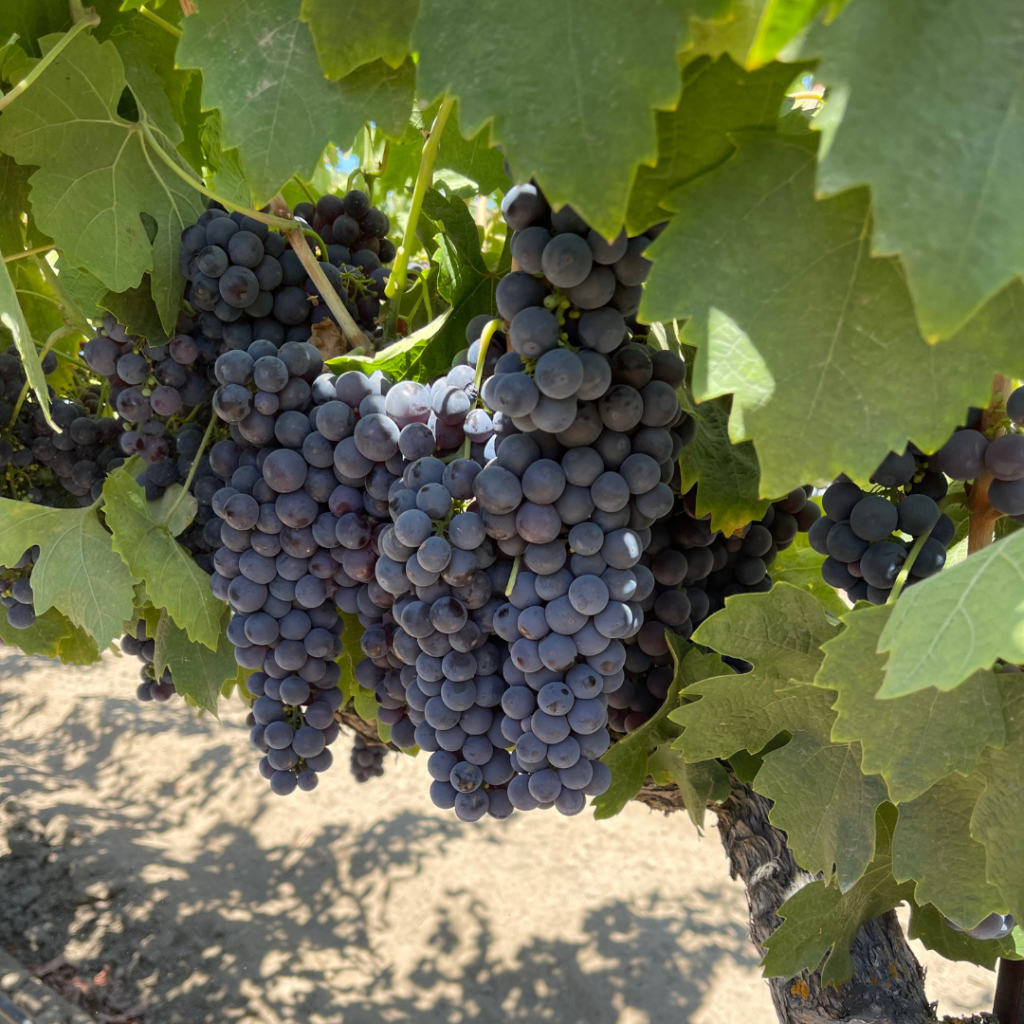
Special Primitivo coming from fifth generation farmer Berton Costamagna
There is something very special about walking through this Primitivo vineyard for fifth generation farmer Berton Costamagna. “Since 1902 my family has been here in Lodi farming these wine grapes”, says Berton. “To think that my Nono (Great, Great, Great Grandfather) had the foresight to start a farming adventure back then, by planting his first vineyard of Primitivo here, and to see where it is now, is so inspiring to me.” With its sandy loams, and ideal climate, farmers back then quickly saw the potential for growing wine grapes in Lodi, in the heart of California. Fast forward 120 years, and Lodi California has come to be known as the Zinfandel Capital of the World, and is now one of the top producing AVA’s in the world. The Costamagna family has continued farming their family’s clone of Primitivo for all these years for wineries and home winemakers to enjoy with their families. “These grapes make for a great wine, but what is truly special, is these grapes connect us to the hard work, traditions, and memories of my family before me. My hope is that folks can make as many memories drinking the wine from these grapes as our family has made farming them.” 🍇🍷 We can’t wait to receive these grapes from the Costamagna Family!
How to Order
We are an old school company. Give us a call at 877-812-1137 or email us at sales@juicegrape.com to get the ball rolling on your pre-order. Don’t forget, we can create custom fermentation templates for you if you would like!
If you aren’t local to New England and need your product shipped, please email sales@juicegrape.com for a freight quote. We will be shipping out of our Bronx, NY location – D’Arrigo. If you live in the Metro NY area and are interested in a freight quote please reach out to sales@juicegrape.com
Unfortunately, we cannot ship fresh juice. We can ship our sterile juices (Original All Juice (juicegrape.com)), they ship year-round without refrigeration. This is the best option for home winemakers who cannot pick up the fresh product from MWG’s facilities.
If you have a large fresh product order (2,000lbs and up), please contact sales@juicegrape.com for a freight quote.
For more information regarding the Fall Harvest please feel free to contact us at sales@juicegrape.com or give us a call at 877-812-1137. We are looking forward to helping you with your next great wine!
Sincerely,
Christina Musto
Musto Wine Grape Co.
Fall Foods to Pair with Red Wine
It’s that season! The air is getting crisper, the leaves are starting to change color and your mind is turning to those seasonal favorites such as pumpkin EVERYTHING, apples and apple pie, turkey, roasted veggies and sweet potatoes.
But when it comes to pairing your wine with those delicious autumnal treats, where to begin?
Here are a few things to keep in mind when deciding which red wine to try with your fall favorites.
Venison, lamb or beef stew pair nicely with a Red Bordeaux, Barbaresco, or Barolo. Another favorite dish in the autumn season is sweet potatoes. Pair yours with a rich red Zinfandel or if you are having more of a mashed version, enjoy it with a red blend or a lighter Pinot Noir.
Choosing a hearty vegetable stew with mushrooms or fig and goat cheese on almost anything, especially a pizza, also taste better when they are paired with a Pinot Noir. As it is so versatile, Pinot Noir also goes well when had with pork as well.
When considering meals during colder temperatures, comforting side dishes such as butternut squash risotto go nicely with a lighter Italian Dolcetto. Or a great bowl of Sausage Bolognese goes well with Sangiovese or Barbera.
Another favorite dish to indulge in even more so when the temperatures drop is a hearty chili. Serve it with a nice Malbec that will hold up well against all the flavors of the chili.
If you make a short ribs dish braised with vegetables that are cooked in red wine or something such as cheddar mashed potatoes, you can pair these with a Pinot Noir or Merlot. These red wines are medium-bodied and will add to the earthy flavors of these items.
And don’t forget desserts in the fall. That slice of pumpkin pie would be even sweeter with a glass of barrel-aged Port. Something to keep in mind, you typically want your wine to be sweeter than the dessert you are pairing it with. If a wine is too dry it will not taste as well with an overly sweet dessert.
No matter what you make in your lineup of fall favorite dishes, there is certainly a red wine to pair with it. Hopefully these gave you some ideas as you plan your autumn menu and go shopping for your wine; or better yet, see what you have in your own cellar.
Written by Michelle Griffis aka the Nutmeg Nose for MWG
Source 1
Source 2
Source 3
Source 4
Montepulciano 2020 By Joseph A. Picone, DMD
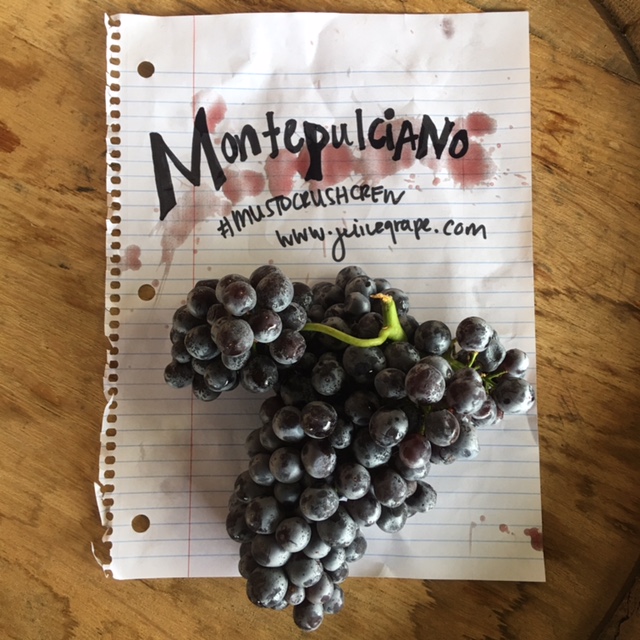
Montepulciano 2020 By Joseph A. Picone, DMD
I had the pleasure to obtain 10 (36lbs) cases of Montepulciano grapes from Musto Grapes (Frank Musto) on October 10, 2020. Making wine using the many varieties of first class Musto sourced grapes has been an Annual fall event for the Picone family and our friends for the past 30 years or so. Over the years, I have made Cabernet Sauvignon, Merlot, Old Vine Zinfandel, Sangiovese, Malbec, Reisling, Chardonnay, Sauvignon Blanc, Moscato, and White Zinfandel to name a few. Each having their own unique qualities to enjoy. Frank and his crew are great in providing all the resources and guidance needed for the first-time wine maker all the way to the seasoned-pro. I was fortunate to have taken a one semester class years ago at Naugatuck Community College on Wine Making given by Bob Herold which together with Frank’s support team has allowed me to create some delicious wines over the years.
I would like to share my experience with you on making this year’s Montepulciano 2020.
The grapes were outstanding. The Brix reading on the refractometer was 25. The clusters were full and the berries were a beautiful deep purple. The boxes were well packed with few if any leaves. We crushed the 360lbs of grapes and immediately added some potassium metabisulphite to kill any wild yeasts. My crusher is also a destemmer, so all the stems were separated from the must during this process. The pH of the must started at 3.70 which wasn’t surprising due to the high Brix reading. I added an appropriate amount of Tartaric acid to bring the pH to a more desirable 3.41 the day of crush. 25 ml of Color Pro enzyme was added at this time as well.
At approximately 24 hours post crush, the Must was inoculated with 35 grams of yeast BM 4X4 in a solution containing GoFerm yeast nutrient. The temperature of the Must at the time of inoculation was 60 degrees F. The yeast solution was well constituted throughout the must. Periodic punching down of the “cap’ was done every 6-8 hours throughout the primary fermentation time.
At 48 hours post crush, the Must temp was 66 degrees F at the Brix reading was 23.5. Fermaid O was added.
At 72 hours post crush, the Must temp was 75 degrees F and the Brix reading was 20. Fermaid K was added.
At 96 hours post crush, the Must temp was 82 degrees F and the Brix reading was 16. I added oak chips to the vat.
At 120 hours post crush, the Must temp was 78 degrees F and the Brix reading was 8.
At 144 hours post crush, the Must temp was 72 degrees F and the Brix reading was 4. 0.9mg of Malolactic culture VP41 was added to the Must and thoroughly mixed in.
At 168 hours(7 days) post crush, the Must temp was 70 degrees F and the Brix reading was 3. The Must and remnant skins were carefully pressed using a bladder press. The raw yield was approximately 27.5 gallons. The Must was placed in cleaned and sanitized demijohns utilizing airlocks to allow CO2 to escape while fermentation progresses, albeit very slowly. The residual skins were heavily consumed during the fermentation leaving behind very little structure. The color extraction was excellent and provided a deep rich purple wine. More Oak chips were added to each of the glass carboys/demijohns.
The slow fermentation in the demijohns went uneventfully and at 2 months, careful racking was accomplished and an appropriate amount of Potassium Metabisulphite was added to help kill off any more yeast cells(30ppm).
At 6 months post pressing, another racking was accomplished without the addition of any sulphites.
At 9 months, I have just begun bottling and I am very pleased with the wine. It is a crystal clear, deep purple, medium to full body, somewhat fruity flavored wine. I expect it to pair well most any dish but have enjoyed it with pasta, pork, veal, and chicken thus far.
Sincerely,
Joseph A. Picone, DMD







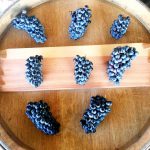
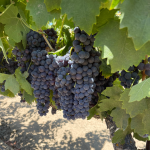
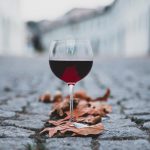
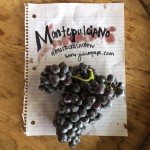
Recent Comments